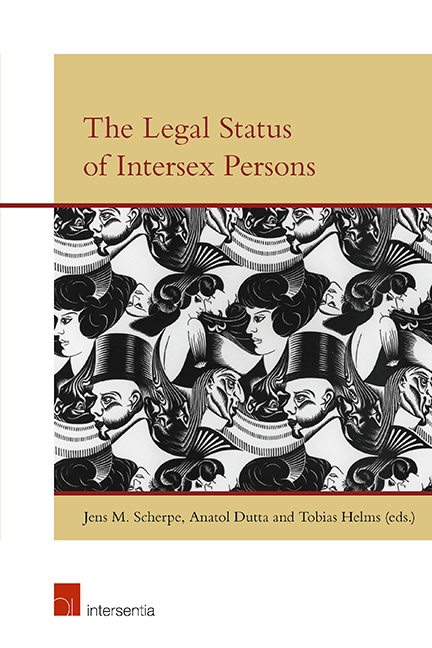Book contents
- Frontmatter
- Preface
- Contents
- List of Contributors
- The Legal Status of Intersex Persons: An Introduction
- Malta Declaration
- Darlington Statement
- Vienna Statement
- PART I MEDICINE AND PSYCHOLOGY
- Biology of Fetal Sex Development
- Intersex in the Brain: What Neuroscience can Tell the Law about Gender Identity
- Gender Identity and Intersex Conditions
- Evidence-Based Reviews of Medical Interventions Relative to the Gender Status of Children with Intersex Conditions and Differences of Sex Development
- PART II THEOLOGY AND LEGAL HISTORY
- PART III TRANSGENDER, TRANSSEXUALITY AND INTERSEX
- PART IV NATIONAL LEGAL DEVELOPMENTS
- PART V PRIVATE INTERNATIONAL LAW ASPECTS OF INTERSEX
- PART VI INTERSEX AND HUMAN RIGHTS
Gender Identity and Intersex Conditions
from PART I - MEDICINE AND PSYCHOLOGY
Published online by Cambridge University Press: 31 January 2019
- Frontmatter
- Preface
- Contents
- List of Contributors
- The Legal Status of Intersex Persons: An Introduction
- Malta Declaration
- Darlington Statement
- Vienna Statement
- PART I MEDICINE AND PSYCHOLOGY
- Biology of Fetal Sex Development
- Intersex in the Brain: What Neuroscience can Tell the Law about Gender Identity
- Gender Identity and Intersex Conditions
- Evidence-Based Reviews of Medical Interventions Relative to the Gender Status of Children with Intersex Conditions and Differences of Sex Development
- PART II THEOLOGY AND LEGAL HISTORY
- PART III TRANSGENDER, TRANSSEXUALITY AND INTERSEX
- PART IV NATIONAL LEGAL DEVELOPMENTS
- PART V PRIVATE INTERNATIONAL LAW ASPECTS OF INTERSEX
- PART VI INTERSEX AND HUMAN RIGHTS
Summary
INTRODUCTION
Gender identity refers to the core sense of the self as male, female or somewhere on the spectrum outside the binary. Though Facebook users can now choose from (at least) 71 gender identities, a number of them are distinct by virtue of variation in other domains, such as gender role behaviour and sexual preferences. For example, the identity ‘Femme’ is usually interpreted as a feminine-identifying gay woman. Though there tends to be a high degree of covariance among gender identity, gender role and sexual preferences, they are independent constructs. Indeed, the vast array of gender identities colouring the current social landscape appears to have spawned from conscious appreciation of independent variance of domain-specific characteristics.
The recent expansion of gender expression in the form of varied identities highlights the complexity of any one person's gendered experience. While only a minority of these identities represent distress on the level felt by those who eventually seek medical intervention, they represent factors which may contribute to such outcomes. For example, the identity label ‘Butch’ represents a lesbian who sees herself as more masculine than other women, or in comparison to a lesbian who identifies as ‘Femme’. Nevertheless, the Butch-identified person does not seek to change her identity label or physical status to male in alignment with a masculine gender role and sexual orientation. From a clinical perspective, the difficulty lies in distinguishing subtle differences between the two conditions. Potential influential factors include self-perceptions of gender typicality, felt pressure with respect to typicality and gender contentedness. The degree to which one feels out of place among same-gender peers, while feeling pressure to conform and low levels of contentedness may prompt one to seek physical gender change. But how do we explain the variance in self-perceived gender typicality, felt pressure and gender contentedness? Upbringing, cultural norms and religious beliefs are likely to play a role. From a completely pragmatic perspective, sexual orientation may play a significant role for individuals living in cultures where homosexuality is a crime on religious grounds.
- Type
- Chapter
- Information
- The Legal Status of Intersex Persons , pp. 65 - 80Publisher: IntersentiaPrint publication year: 2018



